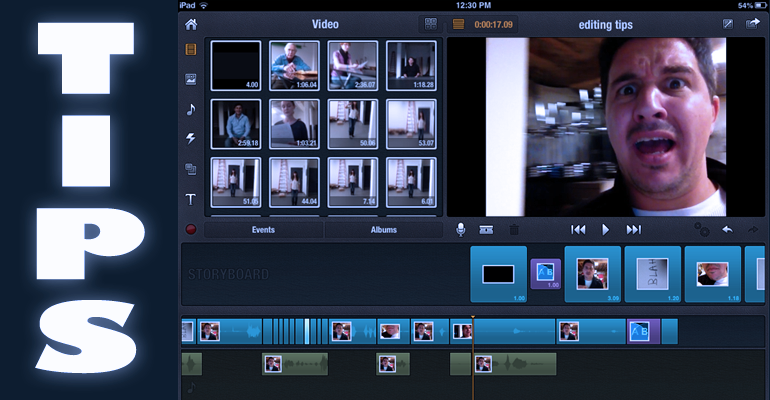I have seen tons of editing tutorials out there that are NLE specific. I watch them all the time. However, I rarely see any basic editing tutorials that are useful for any NLE. In order to fill the void, I present my video-editing tips series, good for the newbie, and potentially useful to the pro.
If you are reading this, I’m sure you understand editing is a series of moving images re-organized into a timeline or sequence. Each editing project can vary greatly, but the goal is always to cut the story you have in the most engaging manner.
Moving out of the nursery school level stuff, I wanted to jump up to grade school. What is it about any particular shot or edit that makes it engaging? Well, it could be many things, but the one common factor that probably combines all of them is…
Action
Action is key to any edit, whether editing a marketing promo or a dialogue in narrative films. When I say action, people usually think john woo, doves flying, bruce lee flare, jason statham style, with the blood of a quentin tarantino flick. Then they wonder how that helps cut together an interview, and think I’m out of my mind. Well, two facts for you. One: you are not the first to call me nuts. Two: that’s not the kind of action I mean.
There are many types of ‘action’:
- Re-action (i.e. in awe, confused, surprised)
- Expression (i.e. fear, hope, regret)
- Emotion (i.e. tear up, smile, laugh)
- Movement (i.e. head turn, nod, wink, pantomime)
Action is something that our minds automatically react to, like a cat who can’t resist a dangling string. Action is engaging because it adds subliminal intrigue. Action is ‘what is happening’ or ‘interesting’ in a particular shot. It is what separates video from still images. A shot that lacks action is what a laymen commonly refers to as ‘boring’.
How to Cut on Action
Now that we understand what action is, how do we use it to spice up our edits?
When I sort through the footage to cut it up, or organize it, I do so based on action. In another words, I lay out each clip, whether on a separate timeline, or in a source monitor, and then I set ‘in’ and ‘out’ points around the action points.
For example, let’s take something that seemingly has little action in it: a single camera, one person interview that we are going to insert relevant b-roll into.
For our purposes, I was able to find this concise, informative interview with a supermodel I recently shot that we can use for our ‘a-roll’, or main footage.
For B roll, I took a couple of award winning stills (awards are not 100% official yet), a close-up, and a quick shot of an incredible camera move I nailed during the shoot. Now the goal is to cut this into the interview to make it as engaging as possible.
Decisions. Decisions.
Deciding when and where to cut is what makes you an editor. Editing is all about the transitions from one shot to the next, and the purest form of any edit is ‘the cut’, or the point in which one shot changes to the next. For this interview, I simply ‘cut’ the points in the A roll that were most interesting. That would be:
- My introduction (the beginning)
- When I laughed
- When I moved my hand
- My end expression
These were the ‘action’ points of the interview, and the most ‘interesting’ visual parts that I wanted to keep for the final edit. For this interview, I am not cutting up the audio, so all we are concerned with is where to insert the B roll. These points I set are the footage I am going to leave in. Over the other parts of the A roll, I will place in some B roll. After some intense editing sessions, here is what my finished interview looked like.
This top level of production may be intimidating but hopefully you see how it can work. The interview, without any type of legible speech, is still visually interesting (for what we’re working with), simply because in each shot there is some type of action, or lack of action, which engages the viewer. In fact, you may have even chuckled, or threw up, which we certainly count as emotional, or intestinal, engagement.
Feedback
Would love to hear if this tip has helped you at all, or if it was the biggest waste of time since the internet was created. Barring a harsh, overwhelmingly dismal reaction, look for more tips in the future.
If you found this content valuable, please follow me on twitter or like us on facebook to receive future updates!


Trackbacks/Pingbacks